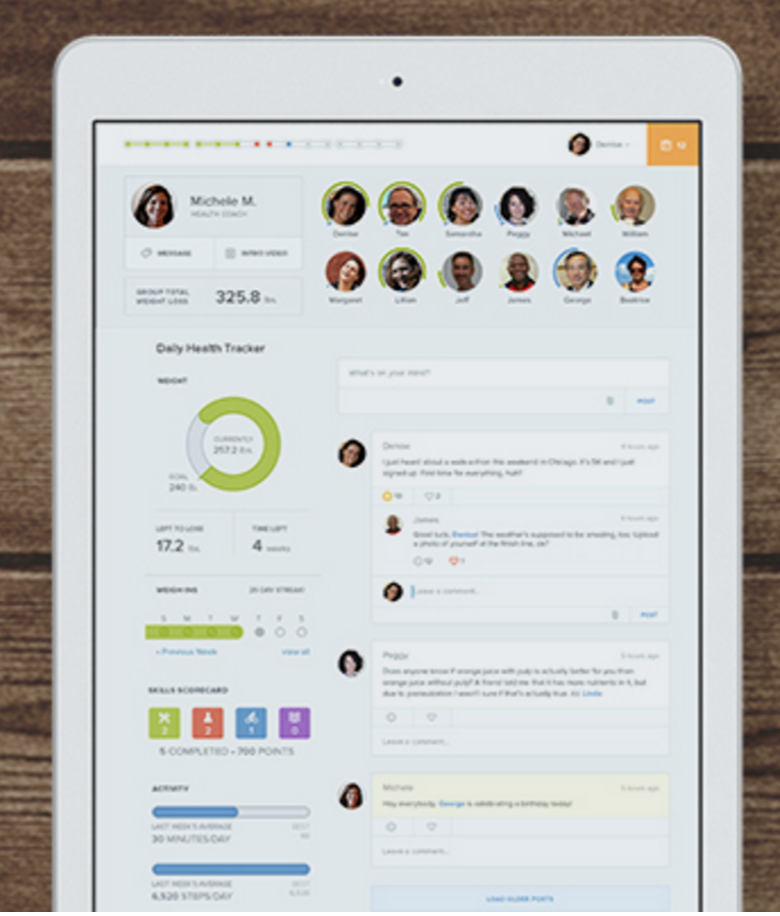 At the Digital Medicine Connect in Boston this week, presenters wrestled with the question of what it would take to spur wider adoption of digital therapies. With Omada CEO Sean Duffy on the panel, it’s not surprising that one common answer — more and better efficacy data — came up. But also, speakers including Vidya Raman-Tangella, head of United Healthcare’s Innovation Center of Excellence and Guarav Singal, director of the innovations unit at Foundation Medicine, spoke about the need to make innovations fit seamlessly into the lives of doctors, as well as patients.
At the Digital Medicine Connect in Boston this week, presenters wrestled with the question of what it would take to spur wider adoption of digital therapies. With Omada CEO Sean Duffy on the panel, it’s not surprising that one common answer — more and better efficacy data — came up. But also, speakers including Vidya Raman-Tangella, head of United Healthcare’s Innovation Center of Excellence and Guarav Singal, director of the innovations unit at Foundation Medicine, spoke about the need to make innovations fit seamlessly into the lives of doctors, as well as patients.
“My classmates keep asking ‘When can I prescribe this?’ and I always tell them ‘not yet, not until the broader network access,’” said Duffy, who went to medical school before founding his company. “But it’s starting to happen. We, a few months ago, announced a partnership with the AMA. The thrust of that body of work right now is ‘Let’s figure out – [assuming] this world is coming – how can we set up this workflow? Because you can’t do an outpatient referral to Omada yet; that doesn’t exist. You can’t order a digital program the same way as a lab.”
Raman-Tangella says that physicians are very receptive to getting more patient data, provided its presented to them in a meaningful way.
“When you look at lifestyle and risk factor management, we are working closely with physicians on a couple of things,” she said. “So for instance, to make doctors aware of what’s going on in a patient’s life, and say ‘here’s something you could discuss with them.’ There’s tremendous value that’s lying in the data where if we were to partner with physicians and see them as ambassadors to help patients change their behavior, that’s a huge opportunity. But you have to give them the right information, at the right time, for the right purpose. Don’t flood them with that information.”
Singal said he thinks the main way technology is already becoming essential to doctors’ lives (and will only be more essential) is in helping them keep track of the huge volume of information that they need to know to be effective physicians.
“If you look at the amount of knowledge [my father] had to memorize and the evolution since then, physicians have had to do this superhuman feat of keeping this all in their heads. And while that may have been possible 30 years ago, it’s definitely not possible today. I see an inevitable transition and hopefully cultural acceptance that we’ll need help as doctors and that that’s not a bad thing, it’s not something to be ashamed of, it’s something to embrace. And I see that coming quickly.”
But what about patients? Raman-Tangella said that the way to make sure digital therapies fit meaningfully into patients’ lives was to listen to patient perspectives and make sure the services you’re providing them are what they really need.
“Thus far, every time we apply data and technology it’s been in a siloed way,” she said. “Let’s start viewing patients in a holistic way so we can create a holistic picture. It’s very easy for any of us to say ‘We know what we want to do, this is how you shall use it.’ But that’s so wrong. Make it work for the individual. Don’t pretend like we know how to solve it for them.”















